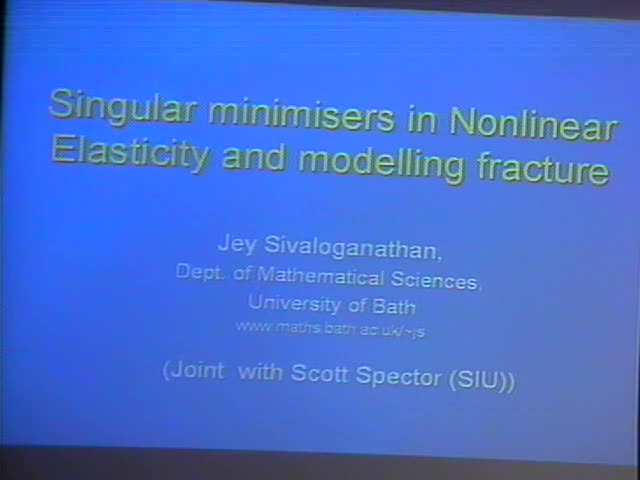Singular minimisers in nonlinear elasticity and modelling fracture
Presenter
July 22, 2008
Keywords:
- Elasticity
MSC:
- 74B10
Abstract
We present an overview of a variational approach to modelling
fracture initiation in the framework of nonlinear elasticity.
The underlying principle is that energy minimizing deformations
of an elastic body may develop singularities when the body is
subjected to large boundary displacements or loads. These singularities often
bear a striking resemblance to fracture mechanisms observed in polymers.
Experiments indicate that voids may form in polymer samples
(that appear macroscopically perfect) when the samples are
subjected to large tensile stresses. This phenomenon of
cavitation can be viewed as the growth of infinitesimal
pre-existing holes in the material or as the spontaneous
creation of new holes in an initially perfect body. In this
talk we adopt both viewpoints simultaneously. Mathematically,
this is achieved by the use of deformations whose point
singularities are constrained to be at certain fixed points
(the "flaws" in the material). We show that, under suitable
hypotheses, the energetically optimal location for a single
flaw can be computed from a singular solution to a related
problem from linear elasticity.
One intriguing consequence of the above approach is that
cavitation may occur at a point which is not energetically
optimal. We show that such a disparity will produce
configurational forces (of a type previously identified in the
context of defects in crystals) and conjecture that this may
provide a mathematical explanation for crack initiation.
Much of the above work is joint with S.J. Spector (S. Illinois University).
